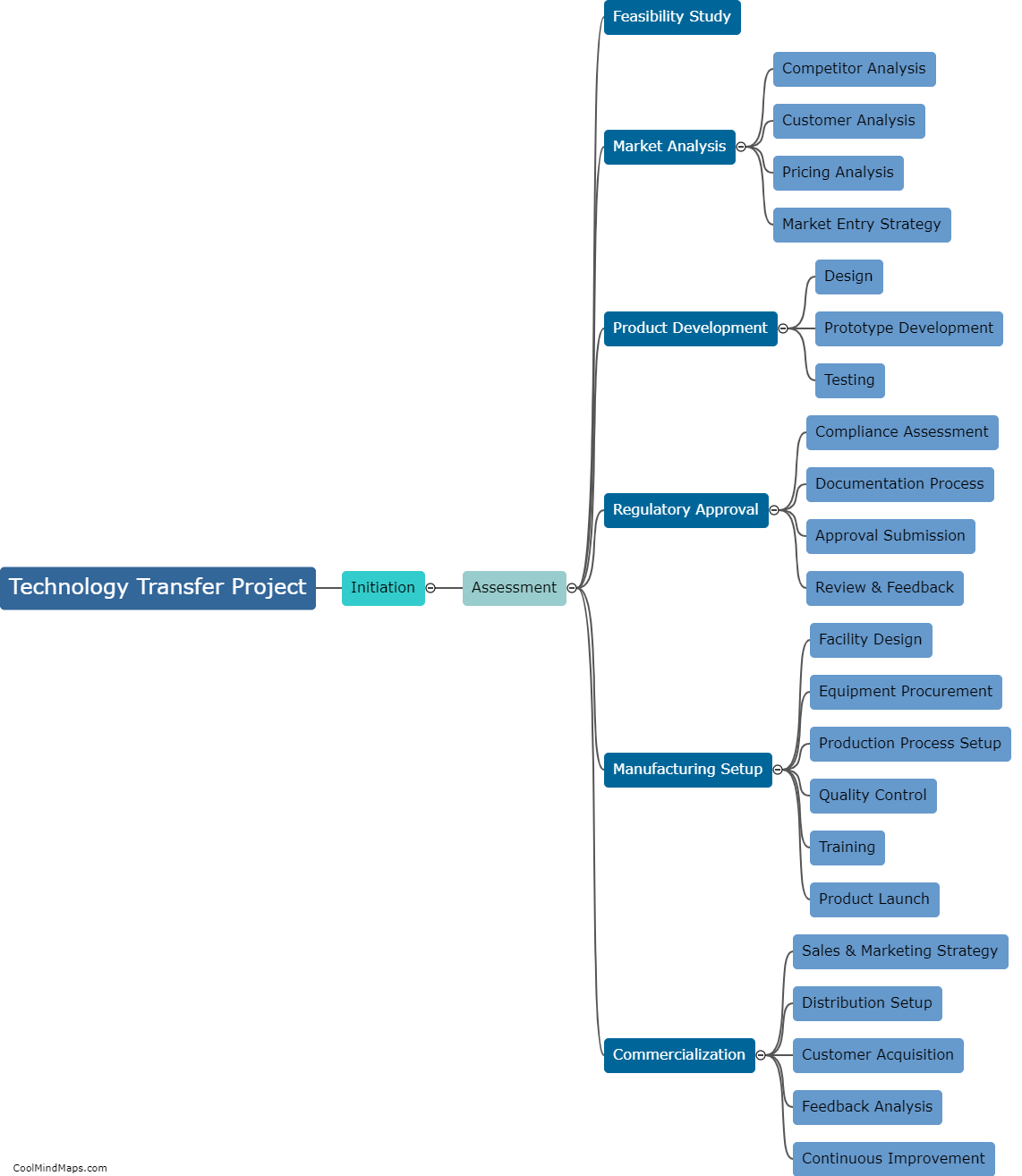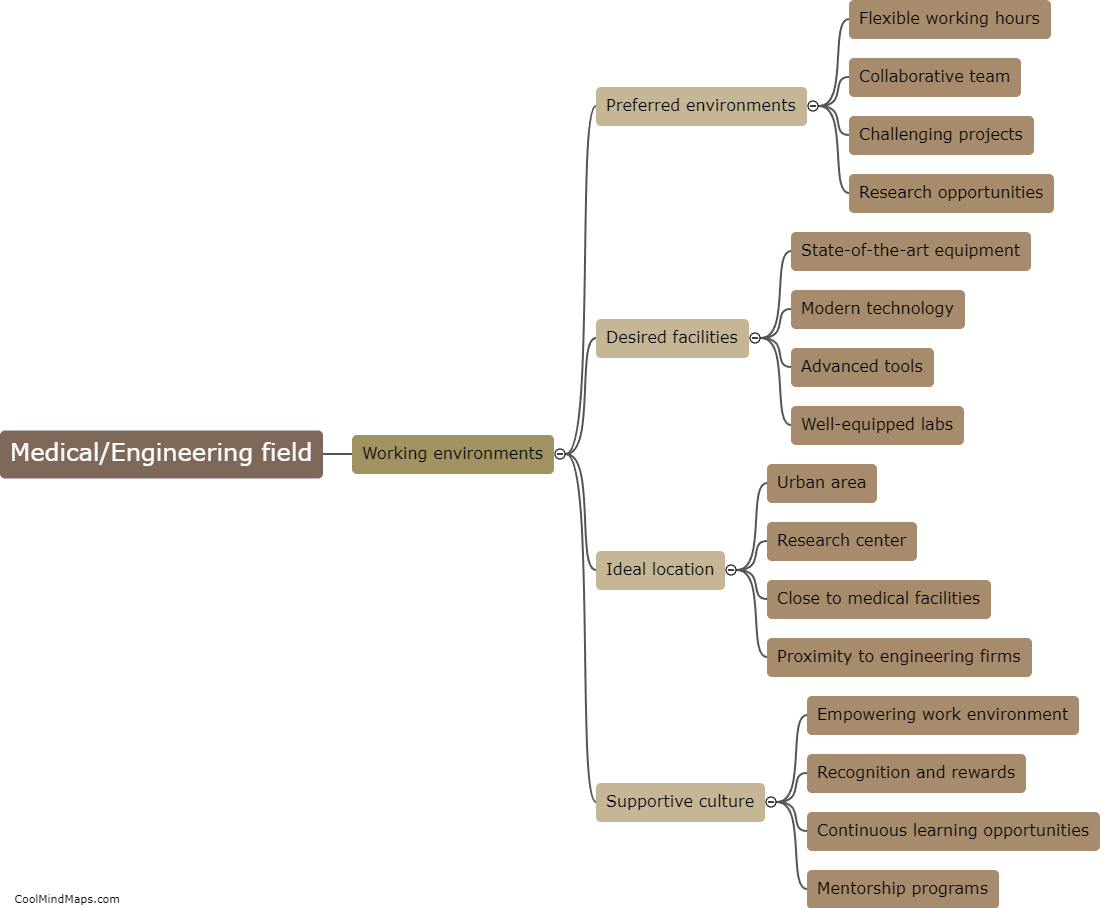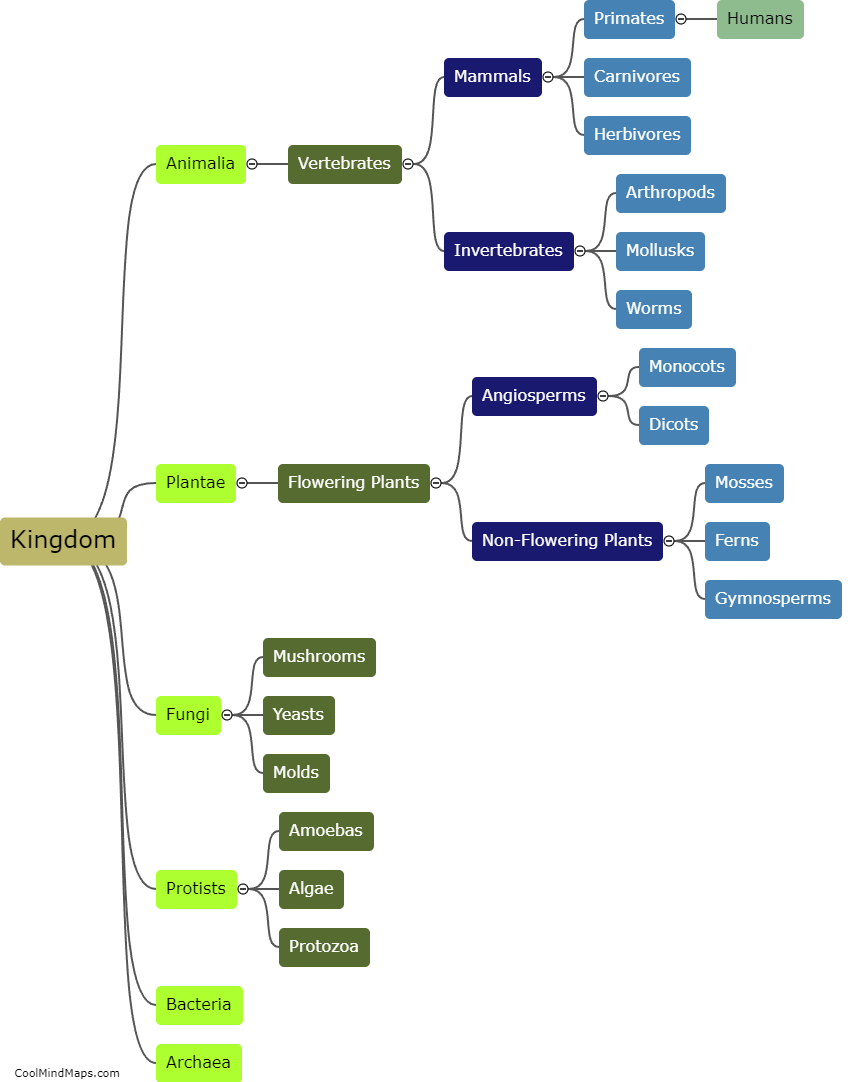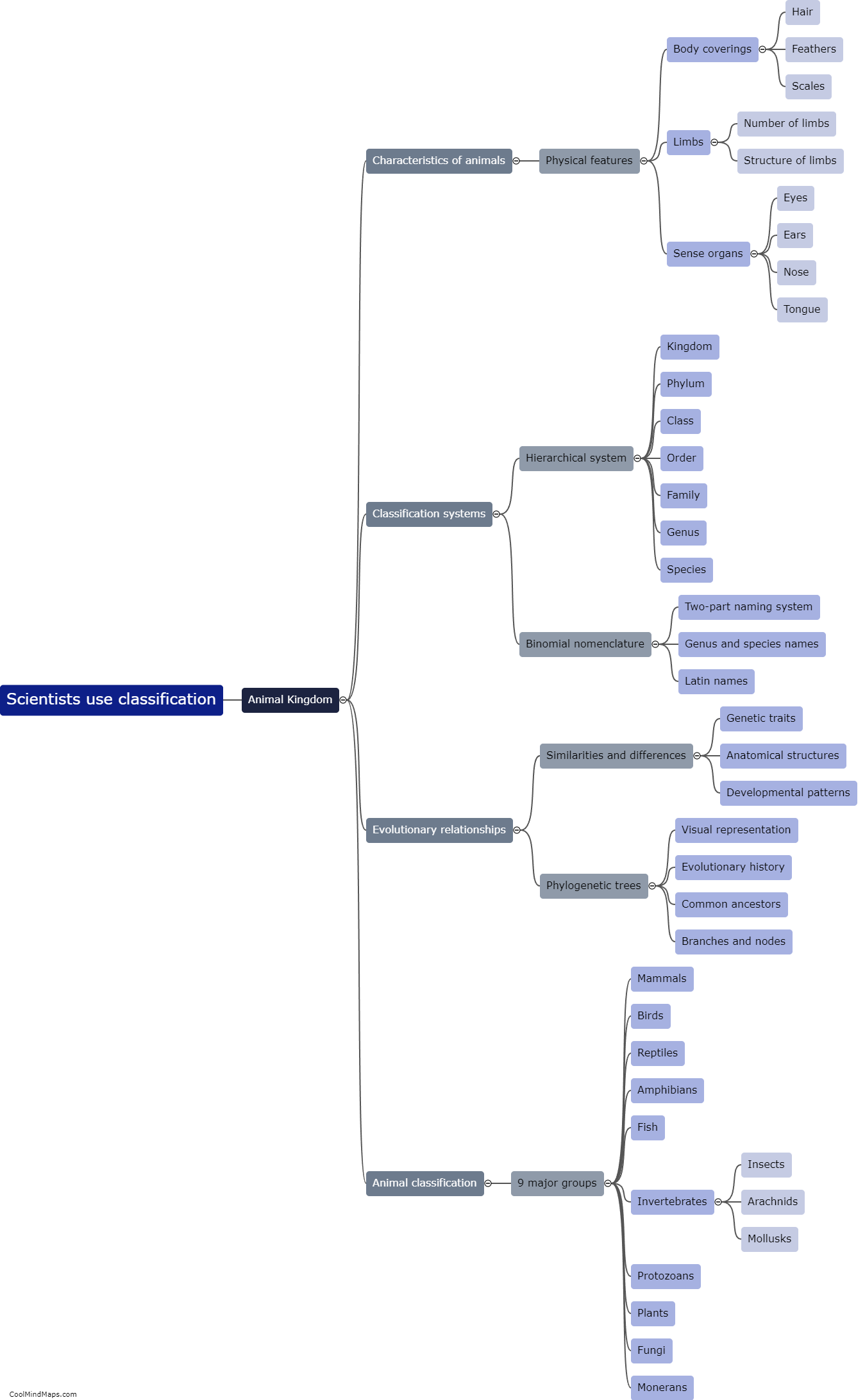What are the main levels of classification for organisms?
The main levels of classification for organisms, also known as the taxonomic hierarchy, are domain, kingdom, phylum, class, order, family, genus, and species. This classification system, called Linnaean taxonomy, was developed by Carl Linnaeus in the 18th century and is still widely used today. At the highest level, organisms are divided into three domains: Bacteria, Archaea, and Eukarya. These domains are then further divided into kingdoms, such as Animalia, Plantae, Fungi, and Protista. Each kingdom is then subdivided into increasingly specific categories based on shared characteristics, such as phylum, class, order, family, genus, and species. This hierarchical classification system helps to organize and categorize the vast diversity of organisms on Earth.

This mind map was published on 26 October 2023 and has been viewed 99 times.











